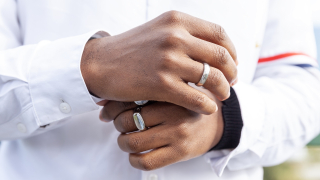Attention deficit hyperactivity disorder (ADHD), a common childhood neurodevelopmental disorder, is typically first diagnosed when kids are 3 to 7 years old and can continue into adulthood. “Learning and thinking differences like ADHD are variations in how the brain processes information,” says Yvonne Cowser Yancy, Chief Administrative Officer and Head of Workplace at Understood.org. “It can affect skills such as reading, writing, math, focus, managing emotions, and organization,” she says.
However, it is often thought to primarily affect males. In fact, according to the Centers For Disease Control and Prevention, (CDC) boys are more than twice as likely to be diagnosed with ADHD than girls. Girls, especially Black girls, are often less likely to be diagnosed and treated due to healthcare inequities and ignorance about symptoms. So those statistics may not tell the whole story.
"Girls are more likely to experience inattentive symptoms of ADHD than boys who tend to display hyperactive and impulsive," says board certified psychologist QuaVaundra Perry, PhD, ABPP. "For ADHD in girls, it is important that parents, teachers, coaches, youth leaders, etc. are educated about ADHD and how it may manifest," she says.
This is particularly helpful as symptoms may not be apparent in every setting. "I wasn't diagnosed with ADHD until graduate school because my symptoms weren't disruptive to anyone but me," says Dr. Kia Silva, Psy.D., founder ofAtlanta Prosper Psychological Services. "Throughout my childhood, I lost things like glasses, jackets, and schoolbooks and at times I felt overwhelmed by daily tasks, but I just thought I was absent-minded," she says.
While Silva had supportive parents, the full impact of the condition affected her when responsibilities and expectations increased. "I've learned that many young women who are often socialized to take up less space emotionally and physically don't even think to ask for help unless they're directly asked about these symptoms," says Silva.

Signs and Symptoms of ADHD
Boys may be more likely to exhibit symptoms like hyperactivity and impulsivity, but it may manifest differently in girls. “She may tap her pencil and talk or call out answers in class rather than jumping out of her seat, but the underlying issue is the same,” says Silva.
“People tend to explain away ADHD symptoms in girls, and it is not recognized until other emotional symptoms such as anxiety or depression manifest,” says Perry. “ADHD symptoms may be attributed to personality style or hormonal changes as girls develop—which may lead to her being diagnosed later in adolescence or adulthood,” she says.
According to the CDC other common signs can include:
- Trouble holding attention to tasks or play activities
- Does not seem to listen when spoken to directly
- Often does not follow through on instructions, loses focus, or gets sidetracked.
- Trouble organizing tasks and activities
- May not pay attention to detail and gets distracted
- Can talk incessantly
- Blurts out an answer before a question has been completed
Gender biases about what’s acceptable and “normal” can impact how behaviors are viewed and labeled but left untreated, symptoms can contribute to girls feeling minimized and misunderstood, says Sillva. “We’re flooded with information from family, peers, and media that teach us that when girls display hyperactivity and impulsivity, it’s a character issue rather than a clinical one,” she says.
How is ADHD diagnosed?
“Typically, a diagnosis is reached through direct observation, the individual’s report of their current experience (verbally and with standardized questionnaires), gathering history, and feedback from support people like friends and family when appropriate,” says Dr. Silva. Additionally, according to the CDC, healthcare professionals usually use the American Psychiatric Association’s Diagnostic and Statistical Manual guidelines to help diagnose ADHD. Consulting a medical professional is crucial. While social media platforms, especially TikTok, may provide symptoms and tips, misinformation about ADHD is prevalent and can confuse you.
What helps with ADHD in girls?
Treating ADHD is a multi-pronged effort that considers the individual’s specific needs, interests, and environmental factors like family, friends, and employment. “In addition to the therapeutic, academic, and psychotropic interventions, girls thrive when we listen, and they feel understood,” says Silva.
“We need to teach girls that their intuition is just as important as tangible proof and that it’s okay and really helpful to express that basic tasks feel hard or that they feel restless or distracted, even if they don’t know exactly what’s going on,” she says.













